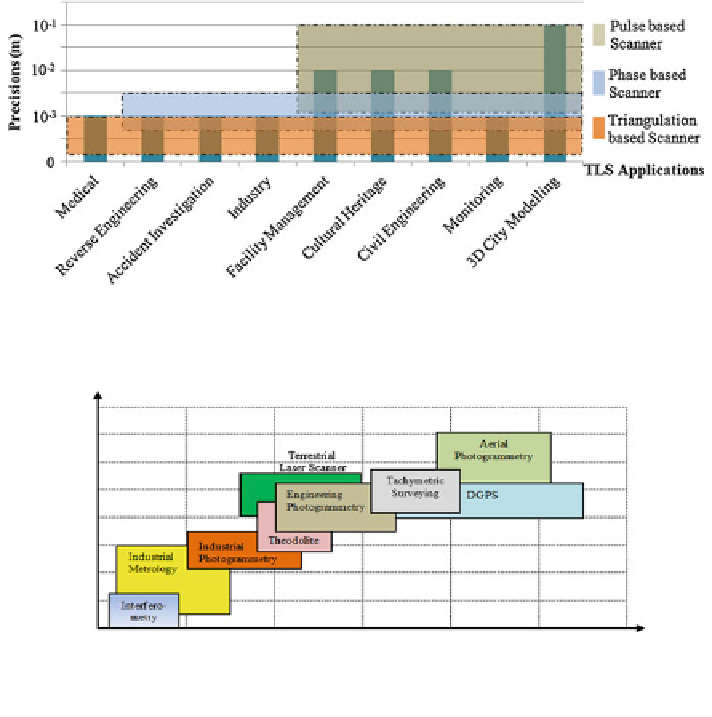Geoscience Reference
In-Depth Information
Fig. 1
Applications of scanner with respect to the measurement precision (Schulz
2007
)
Accuracy
[mm]
10
3
10
2
10
1
10
-1
10
-2
10
-3
10
1
10
2
10
3
10
4
Object size [m]
1
Fig. 2 Relationship between object size and accuracy for different measurement technique
(Luhmann et al.
2006
)
have to be investigated and modelled, and subsequently applied to the raw data, in
order to improve the accuracy. There are two approaches available to investigate
these errors, either separately (component calibration) or simultaneously (system
calibration). Due to the difficulty to afford the requirements of special laboratories
and tools to perform component calibration (Fig.
3
), only academicians and
manufacturers implement it. It is applicable to investigate systematic errors but
most of the component calibration is used to identify the best-suited applications
of the calibrated TLS and also to compare the performance of TLS from different
manufacturers. In contrast, system calibration requires a room with appropriate
targets to determine all significant systematic errors (see Fig.
11
under
Sect. 5.2
).
As a result, system calibration can be considered as a more appropriate technique
for investigation of systematic errors.

